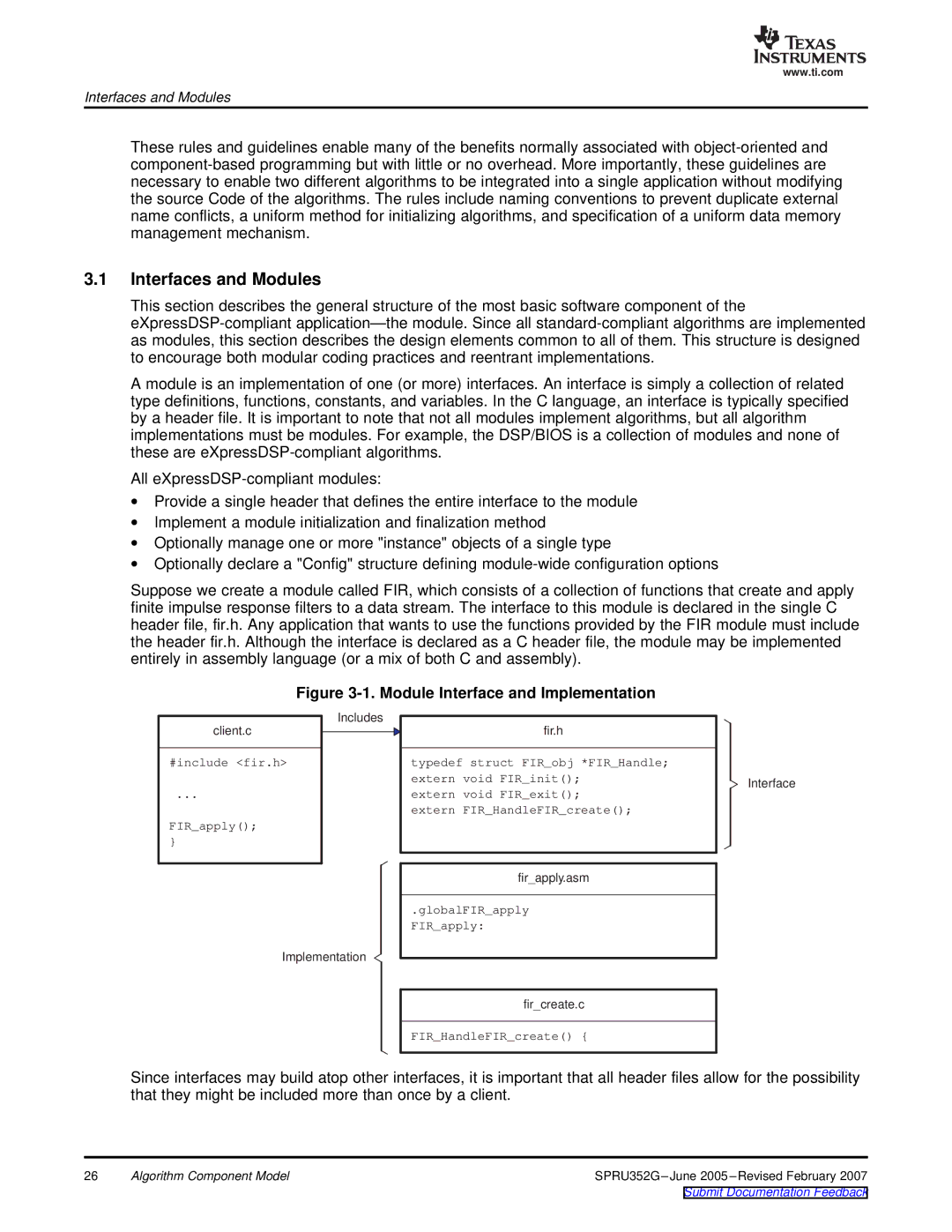
www.ti.com
Interfaces and Modules
These rules and guidelines enable many of the benefits normally associated with
3.1Interfaces and Modules
This section describes the general structure of the most basic software component of the
A module is an implementation of one (or more) interfaces. An interface is simply a collection of related type definitions, functions, constants, and variables. In the C language, an interface is typically specified by a header file. It is important to note that not all modules implement algorithms, but all algorithm implementations must be modules. For example, the DSP/BIOS is a collection of modules and none of these are
All
∙Provide a single header that defines the entire interface to the module
∙Implement a module initialization and finalization method
∙Optionally manage one or more "instance" objects of a single type
∙Optionally declare a "Config" structure defining
Suppose we create a module called FIR, which consists of a collection of functions that create and apply finite impulse response filters to a data stream. The interface to this module is declared in the single C header file, fir.h. Any application that wants to use the functions provided by the FIR module must include the header fir.h. Although the interface is declared as a C header file, the module may be implemented entirely in assembly language (or a mix of both C and assembly).
Figure 3-1. Module Interface and Implementation
Includes
client.c
#include <fir.h>
...
FIR_apply();
}
Implementation
fir.h
typedef struct FIR_obj *FIR_Handle; extern void FIR_init();
extern void FIR_exit();
extern FIR_HandleFIR_create();
fir_apply.asm
.globalFIR_apply FIR_apply:
fir_create.c
FIR_HandleFIR_create() {
Interface
Since interfaces may build atop other interfaces, it is important that all header files allow for the possibility that they might be included more than once by a client.
26 | Algorithm Component Model | SPRU352G |
